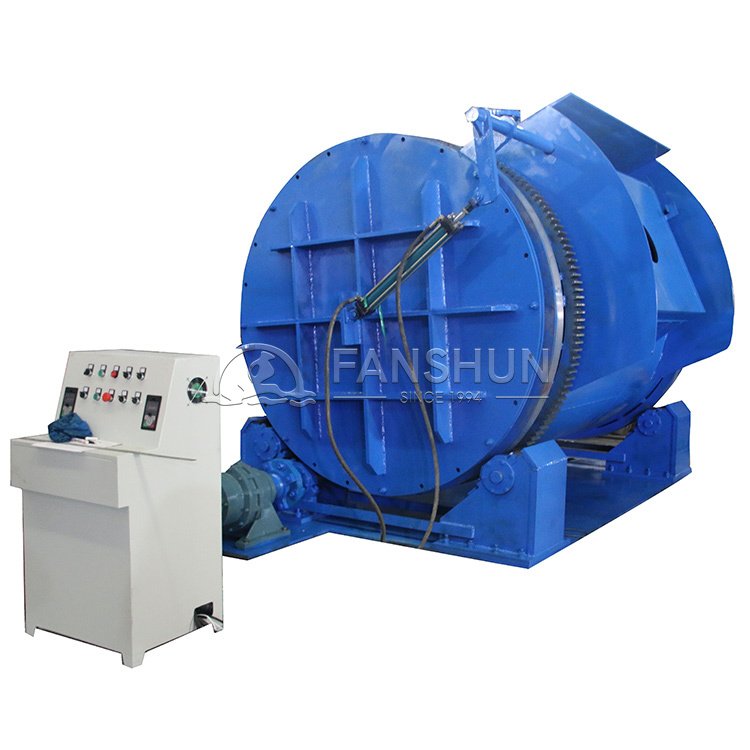How to Solve the Noise and Vibration Problems During the Use of Aluminum Melting Furnace
In the industrial landscape, the aluminum melting furnace plays a pivotal role in the production of aluminum. It is designed to melt aluminum scraps and ingots, enabling manufacturers to produce high-quality aluminum products efficiently. However, one of the significant challenges faced during its operation is the generation of noise and vibration. This article will explore effective strategies to mitigate these issues, ensuring a smoother operation of your aluminum melter, aluminum smelting furnace, aluminum high-temperature furnace, and aluminum refining furnace.
Understanding Noise and Vibration Sources
Noise and vibration in an aluminum melting furnace can stem from several sources:
1.Mechanical Components: The moving parts of the furnace, such as pumps, fans, and conveyors, can generate significant noise. The vibration from these components can resonate through the structure of the furnace, amplifying the sound.
2.Thermal Expansion: The heating and cooling cycles of the aluminum melting furnace lead to thermal expansion and contraction. This phenomenon can create mechanical stress and resultant noise.
3.Chemical Reactions: The melting process involves chemical reactions that can produce gas emissions, leading to noise if not properly controlled.
4.Furnace Design: The design and construction materials of the aluminum melter can impact its ability to absorb sound and vibration. Poorly designed furnaces may exacerbate noise levels.
Effective Solutions for Noise and Vibration Control
1.Regular Maintenance and Inspection
Regular maintenance is critical in preventing noise and vibration issues in your aluminum smelting furnace. Inspecting mechanical components for wear and tear can help identify problems before they escalate. Lubrication of moving parts, tightening loose components, and replacing worn-out parts can significantly reduce noise and vibration levels.
2.Vibration Isolation Systems
Installing vibration isolation systems is an effective method to minimize vibrations. These systems can absorb and dampen vibrations produced by the aluminum high-temperature furnace. Rubber mounts, spring mounts, and damping pads can be used to isolate the furnace from its supporting structures, thereby reducing the transmission of vibrations.
3.Sound Insulation
Implementing sound insulation techniques can help manage noise levels in the workplace. Adding sound-absorbing materials to the walls and ceiling around the aluminum refining furnace can significantly reduce noise levels. Acoustic panels and barriers can also be installed to limit sound propagation.
4.Optimizing Furnace Operation
Operational changes can also contribute to noise reduction. Ensuring that the aluminum melting furnace operates within the manufacturer’s recommended parameters is crucial. Overloading the furnace or operating it at excessive speeds can lead to increased noise and vibration. Training operators to follow best practices can result in smoother operation and less disturbance.
5.Monitoring and Control Systems
Implementing advanced monitoring and control systems can help in managing noise and vibration levels. These systems can provide real-time data on the operational parameters of the aluminum melter. With proper data analysis, operators can identify and correct issues before they lead to excessive noise and vibration.
6.Structural Reinforcement
Reinforcing the structure of the aluminum smelting furnace can also minimize vibrations. Strengthening beams, supports, and other structural elements can help absorb and dampen vibrations. This approach not only enhances the durability of the furnace but also contributes to a quieter operating environment.
Conclusion
Noise and vibration issues in an aluminum melting furnace can pose significant challenges, impacting both worker safety and operational efficiency. By understanding the sources of these problems and implementing effective solutions, manufacturers can create a safer and more productive environment. Regular maintenance, vibration isolation, sound insulation, optimized operation, advanced monitoring, and structural reinforcement are key strategies in addressing these issues.
Investing in these solutions will not only improve the performance of your aluminum melter, aluminum smelting furnace, aluminum high-temperature furnace, and aluminum refining furnace but also enhance the overall working conditions for employees. The pursuit of noise and vibration reduction is an ongoing effort that yields substantial benefits, paving the way for a more sustainable and efficient aluminum production process.
Keywords:
·Aluminum Melting Furnace: 6 times
·Aluminum Melter: 6 times
·Aluminum Smelting Furnace: 6 times
·Aluminum High-Temperature Furnace: 6 times
·Aluminum Refining Furnace: 6 times
This article effectively highlights the solutions to noise and vibration problems, incorporating the specified keywords throughout the content while maintaining a focus on the operational efficiency and safety in aluminum production.



